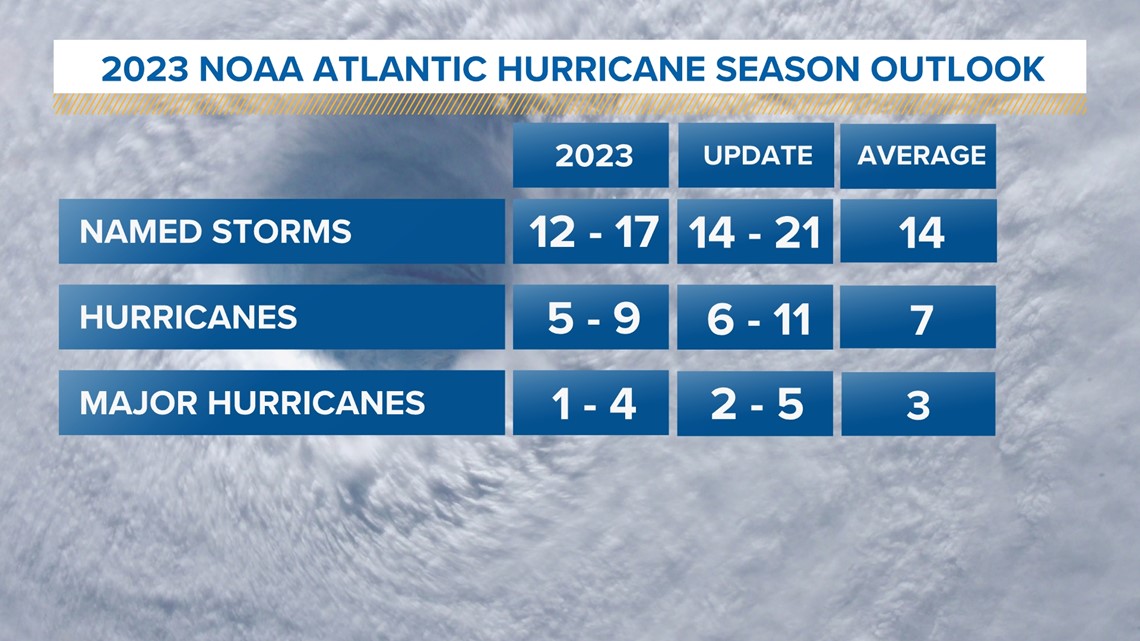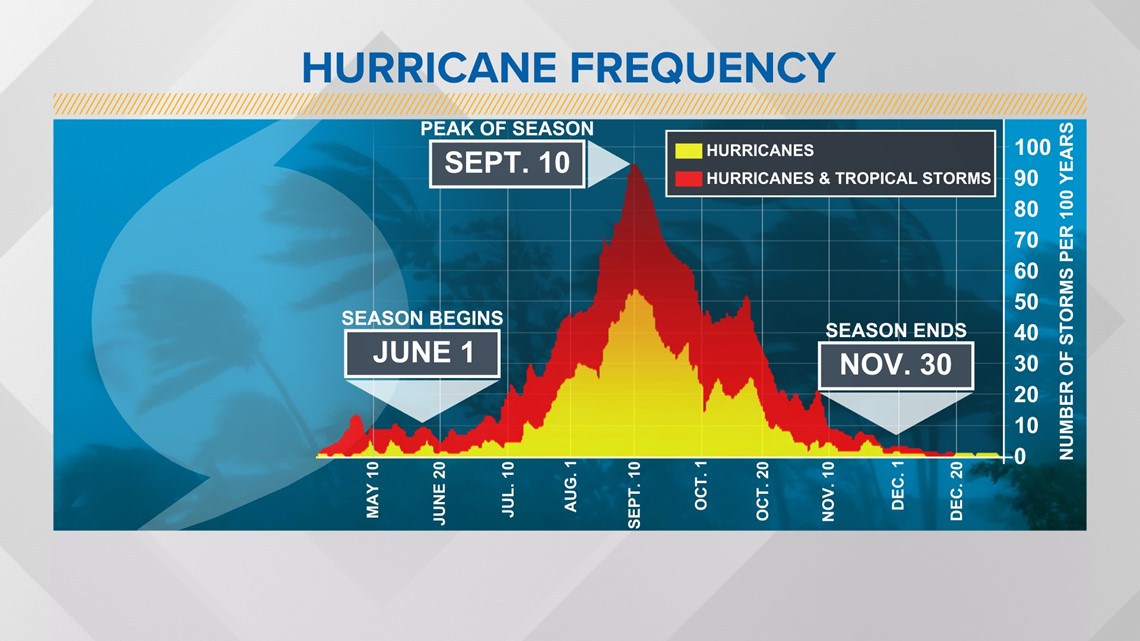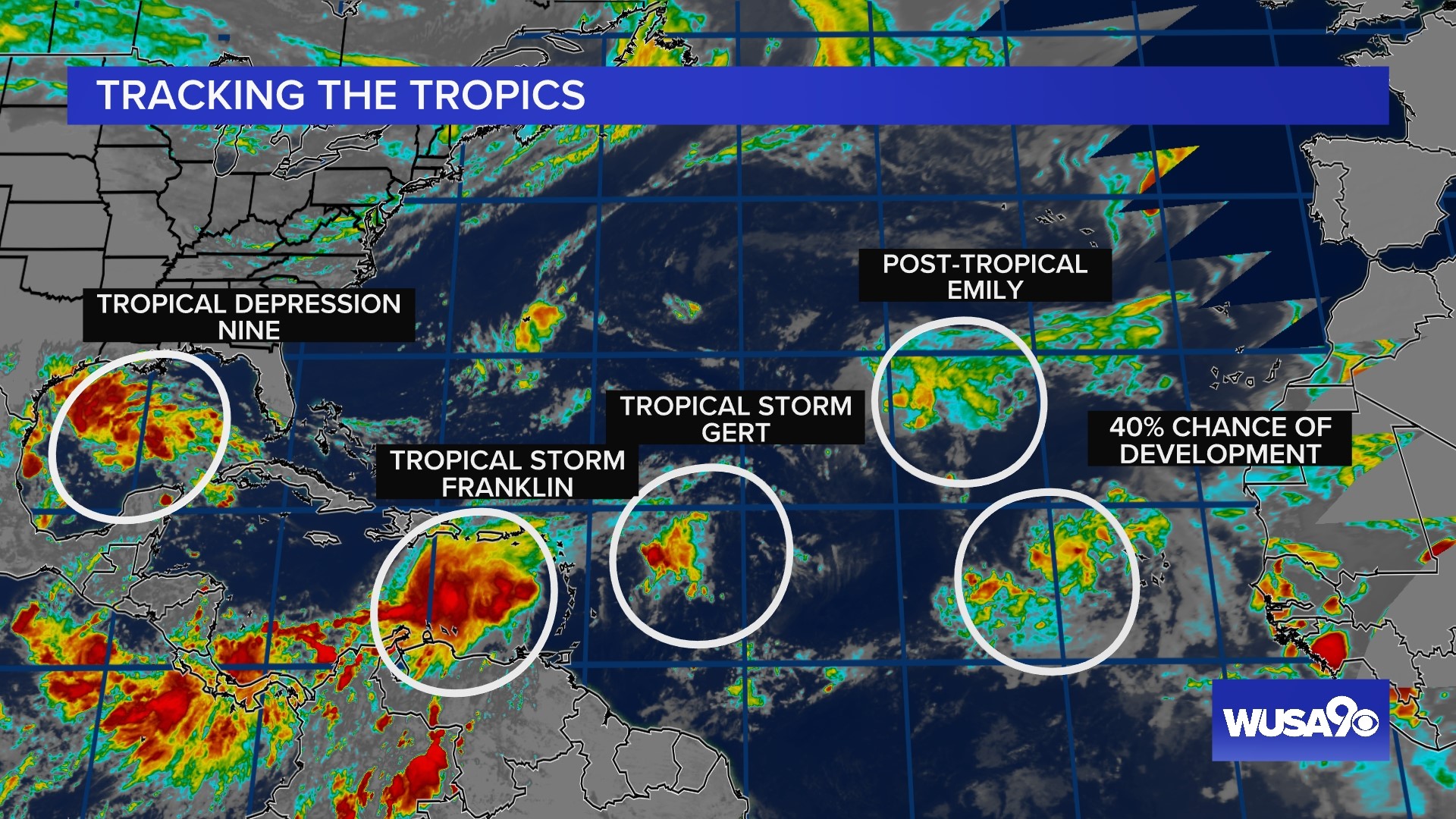WASHINGTON — The 2023 Atlantic hurricane season was initially forecast to be near-normal when scientists at NOAA's Climate Prediction Center issued their May outlook for the upcoming season. The near-normal forecast came as a result of our current El Nino set up which typically results in fewer hurricanes, but our current record-warm Atlantic sea surface temperatures are expected to counterbalance the usually limiting factors during an El Nino year.
As a result, NOAA forecasters increased the likelihood of an above-normal hurricane season from 30% (initially forecast in May) to 60% (updated on August 10). This also means the likelihood of a near-normal season has gone down to 25% from the 40% from the May outlook.
Forecasters initially predicted 12 to 17 named storms. 5 to 9 of which are expected to reach hurricane strength and 1 to 4 that may reach major hurricane strength of category 3 or higher.
The updated outlook has increased the predicted number of storms to between 14 and 21 with 6 to 11 becoming hurricanes and 2 to 5 possible major hurricanes.


There have technically been five storms so far this year, though the first one occurred back in January and didn't receive a name. It wasn't until scientists went back and analyzed the storm after it occurred that it was declared as having tropical characteristics.


The next named storm will be Idalia.
Mid-August through mid-October is when most tropical activity typically occurs with Sept. 10 marked as the official peak of the Atlantic hurricane season.



